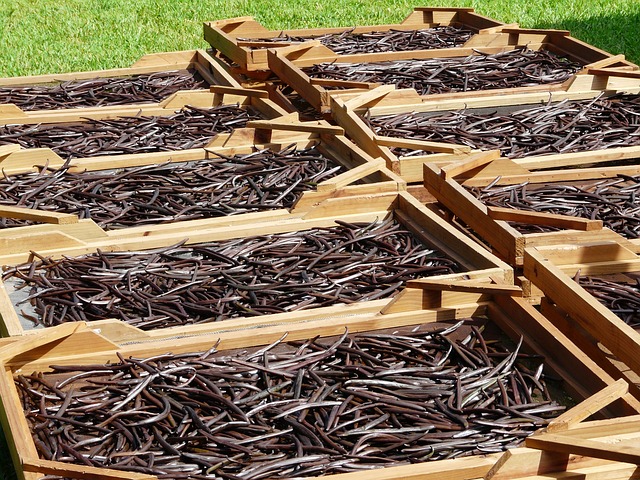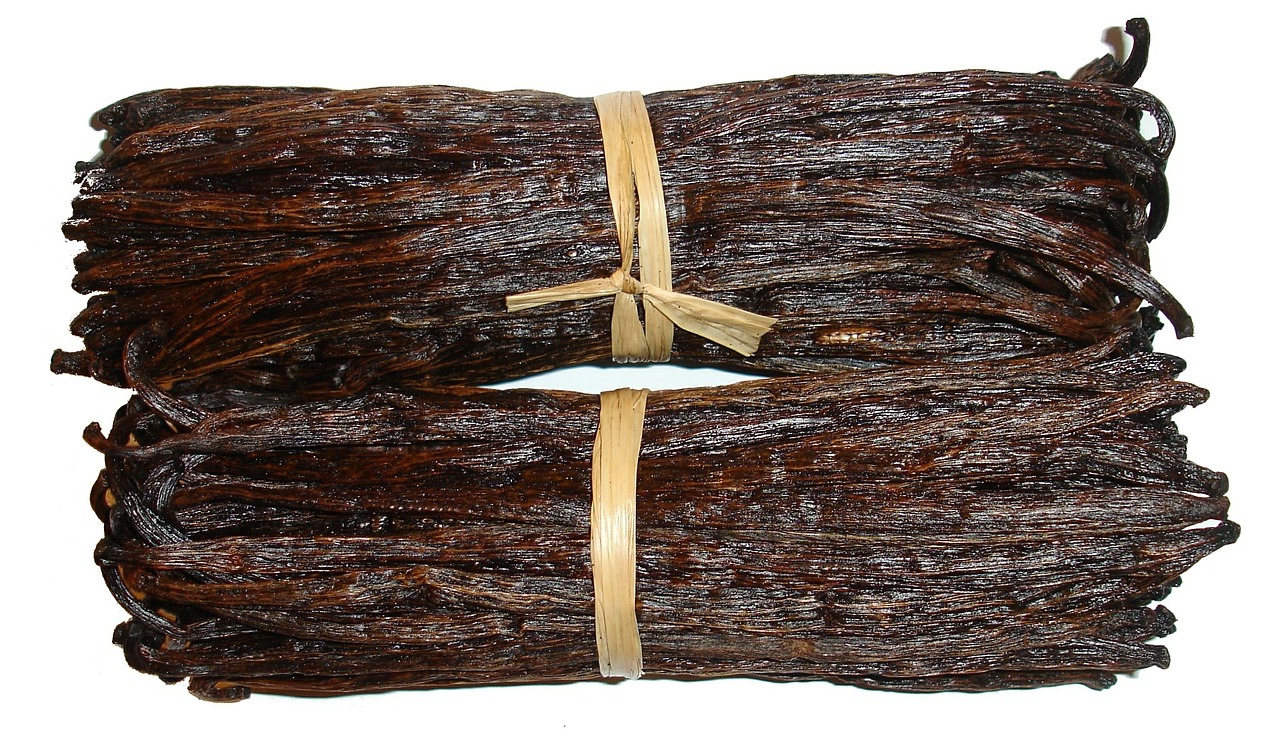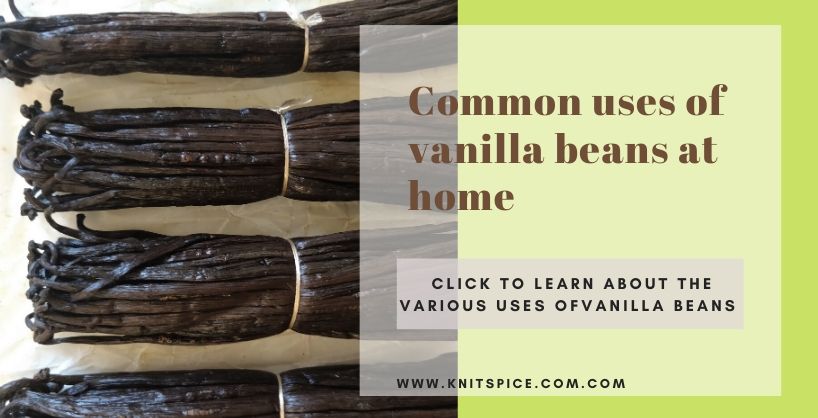Do you love vanilla as a flavor and wondering how you can incorporate it into your diet? Well, search no more. Sit down, relax, and let us take you through the common uses of vanilla beans at home, side effects, dosage, and much more. Before all that;
What is Vanilla?
Vanilla is simply a spice from the orchids of the genus Vanilla. We obtain vanilla from the pods of the flat-leaved Mexican vanilla species (V. planifolia). Its name derived from the diminutive of the Spanish word vaina (sheath or a pod), whose translation is simply a “little pod”. It is after pollination that the plant produces a fruit where the vanilla spice is obtained. ,
The fruits are shaped like pods. These pods can range in size from 5-22 cm in length and are considered of a higher quality when they are larger. Harvesting the pods is a time-intensive process, partly which makes vanilla an expensive spice, in addition to the varsity uses of vanilla.
What is Vanillin?
Vanillin is an organic compound with the molecular formula C8H8O3. It is the principal flavor and aroma compound in vanilla. vanillin contributes to the flavor and aroma profiles of foodstuffs, beverages, and pharmaceuticals.
The green pods do not have the flavor or odor of vanilla. After being harvested, their flavor is developed by a months-long curing process,
Cured vanilla pods contain about 2% by dry weight vanillin; on cured pods of high quality, relatively pure vanillin may be visible as a white dust or “frost” on the exterior of the pod.
Forms of Vanilla
We are all familiar with the extract form of vanilla, but the extract is just one of those forms in which vanilla is available. Other forms include;
Vanilla Beans

These exotic, straight-from-the-orchid fruits, once a rare curiosity and still hard to find in most markets, making vanilla beans difficult to purchase and discover their spectacular flavor. In the preparatory stages, it calls for splitting and scraping the seeds from a vanilla bean, but the pod itself contains a lot of flavors that can enhance beverages and much more.
Vanilla Extract
Without any doubt, this is the most common and widely used form of vanilla. The cheapest and the most readily available type is imitation vanilla extract, which has nothing to do with any part of the vanilla bean but is instead made from an artificial substance known as Lignin Vanillin, which is chemically treated to resemble the characteristic flavor and aroma of vanilla.
Vanilla extract is made by chopping and brewing hand-harvested vanilla beans with a combination of ethyl alcohol and water, then aging it to dark, robust perfection. It works well both in cooked or baked foods and in cold foods or beverages.
is made by chopping and brewing hand-harvested vanilla beans with a combination of ethyl alcohol and water, then aging it to dark, robust perfection. It works well both in cooked or baked foods and in cold foods or beverages.
Two other forms of vanilla are derived from Vanilla Extract or similar to and are;
Natural Vanilla Flavor
This product or form is very similar to vanilla extract, but it is produced without the use of alcohol. It tends to be somewhat less intense than vanilla extract, and its texture is somewhat heavier. Its taste is similar to that of vanilla extract, but it may leave a slight aftertaste, particularly when used in cold beverages or uncooked foods.
Vanilla Paste
Many could be unfamiliar with vanilla paste, which is a sweet, intensely-flavored concentrate of vanilla extract and solids, particularly the tiny, flavorful vanilla seeds. Vanilla paste is used in commercial kitchens to add flavor without adding extra liquid.
Vanilla Powder
This is more common in Europe than the US; the vanilla powder is a mixture of sugar (in the form of dextrose or sucrose) and vanilla extract. Though some vanilla powders are natural, many use synthetic vanilla flavoring so be sure to read the label carefully if you’re interested in true vanilla. These powders are useful for adding to cold beverages or sprinkling over hot foods for a combination of sweetness and flavor, which explores the uses of vanilla.
Common Uses of Vanilla Beans

Vanilla beans have culinary uses, especially when it comes to making sweet foods or flavoring drinks. Purchasing a vanilla bean is the ultimate cooking luxury at home. Mexican, Tahitian, and Madagascar Bourbon beans are soft, shiny, and oily, with a rich flavor that infuses any baking or cooking. You can use the seeds in the vanilla bean pod in baking or as a natural flavoring in your food.
Make Vanilla Extract for Baking
Save the split vanilla pods and using them to make vanilla extract at home. This will help you save a lot of money. Since producing the extract requires considerable time, you may make the extract ahead of time if you intend to use it for baking.
Simply put 3 to 4 split vanilla pods lengthwise in a clean, glass container.
Add 568 milliliters (a pint) of high-quality vodka to the container and seal the container.
Place the container in a cool, dark place for three to four months.
Shake the jar periodically to move around the flavors in the container.
The longer the pods stay soaked in alcohol, the more richness you get. Grade A beans work best due to their high-quality. but you can also use grade B beans.
Make Vanilla Ice Cream
Who could be reading this blog up to this point and doesn’t love Vanilla Ice Cream ? Why not try out this at home then. Get the seeds from the beans and grab two frozen bananas. Place the seeds and bananas in a blender or a food processor. Blend them up and you’ll have an ice-cream. You may want to keep the outer pod for some other use say making a flavored powdered sugar.
? Why not try out this at home then. Get the seeds from the beans and grab two frozen bananas. Place the seeds and bananas in a blender or a food processor. Blend them up and you’ll have an ice-cream. You may want to keep the outer pod for some other use say making a flavored powdered sugar.
Make Vanilla sugar (and salt)
Arguably the common use of beans (or pods) is to dry them and bury them in a jar of sugar. Stir them in a blender or food processor with sugar. The same technique will give you something more unusual: Vanilla Salt, a flavoring that you can use in cookies. Of course, the salt is also good on the savory side.
Flavored coffee and tea
If you like vanilla coffee as I do, add a pod to your coffee beans and grind them together. The best? Chai tea with vanilla; honey, too. This is another use for your purchased Vanilla beans.
Related article: The best tea for a sleepful night
Pierced and poached fruit
Dried Pods, or still fresh, are great for poaching fruit. To get the most flavor out of the pods and into the fruit, run the pods through the fruit and poach away. Vanilla goes well with almost every stone fruit. It is also good with apples, pears, and prunes. Oh, and don’t forget to save the syrup. Depending on what spices you added, it might be nice to sweeten tea, serve over ice cream, or to poach more fruit.
Repel bugs
Everybody likes the smell of vanilla (anyway most people do). Everybody but bugs are a different story. Dilute 1 tablespoon vanilla extract with 1 cup water and wipe the mixture on your exposed skin to discourage mosquitoes, black-flies, and ticks.
Vanilla beans are also used for cosmetic purposes. The extract is used in many hygiene and beauty products.
Make vanilla body powder
Dry out used pods completely, and then grind them with arrowroot powder. You can use this all over as scented body powder.
Make vanilla dry shampoo
Dry out used pods completely, and then grind them with a mixture of 2 parts rice powder and 1 part baking soda. If you have dark hair, add in a bit of cocoa powder. Sprinkle this scented powder on your scalp and brush out to remove excess oils.
Use this oil straight on the body as a moisturizer. You can strain out the seeds using a coffee filter to avoid the tiny seeds staying on your skin.
Relieve minor burns
Evaporating alcohol in the vanilla extract cools burns and alleviates pain. If you accidentally pour hot water, hot cooking oil, or your skin gets into contact with fire, this remedy can be effective.
For people who are struggling with acne or other skin matters, vanilla comes with a great deal of importance in the arena of skincare. Fortunately, the antibacterial nature of this beneficial flower makes it a powerful ally in the battle against pimples, as it can eliminate the underlying infection and speed up the healing process of the skin.
Side Effects of Vanilla
Vanilla is a delicious ingredient with many uses. It is likely safe when taken by mouth in amounts commonly found in foods. However, there are some side effects. Skin contact can cause irritation and swelling (inflammation). for the people manufacturing extracts, because of the high concentration, they may experience headaches, sleep problems, or insomnia.
(inflammation). for the people manufacturing extracts, because of the high concentration, they may experience headaches, sleep problems, or insomnia.
Special Precautions & Warnings
Pregnancy and breast-feeding: Vanilla is LIKELY SAFE for pregnant and breastfeeding women when taken by mouth in food or small amounts. you should avoid over consumption until more research is availed.
Dosing Considerations
Several factors for example the user’s age, health, and a lot of others can be the determinants of the right dose of vanilla but at the moment there isn’t sufficient and conclusive scientific research to baseline in determining the right doses for vanilla. However, there have been limited clinical studies to support a therapeutic role for vanilla. In a study in sickle cell disease, vanillin 1 g daily was given in divided doses over 40 days. Still, that wasn’t enough information because vanillin is metabolized rapidly in the upper digestive tract, oral dosing is undesirable for use in clinical trials. Therefore, keep in mind that not all-natural products are safe (even with all uses of vanilla), and as of that reason, you should always consult a healthcare professional before use.
for vanilla. In a study in sickle cell disease, vanillin 1 g daily was given in divided doses over 40 days. Still, that wasn’t enough information because vanillin is metabolized rapidly in the upper digestive tract, oral dosing is undesirable for use in clinical trials. Therefore, keep in mind that not all-natural products are safe (even with all uses of vanilla), and as of that reason, you should always consult a healthcare professional before use.
Subscribe for Insights on herbs and spices


